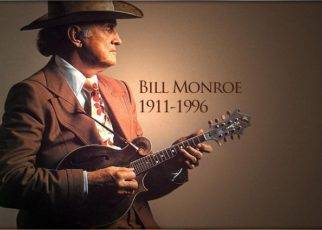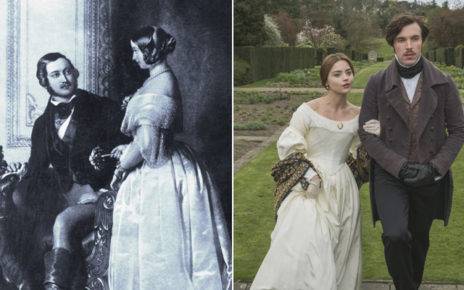The roots of Bluegrass music consist of a blend of the rhythms of black music, gospel music and the anecdotal British influenced, mountain music of the Carter Family and other early, country music stars.
The Birth of Bluegrass
Bill Monroe created Bluegrass music by changing the style of traditional music. In his book Country Music, U.S. A., page 325, Bill C. Malone described Monroe’s music. “Instead of following the melodic line of the fiddler, Bill played improvised solos in a rapid, chopping mandolin style. Combined with the hard driving three finger banjo picking of Earl Scruggs, the Bluegrass sound soon became a style to be copied by other musicians.”
Bill Monroe was born on September 13, 1911 in Western Kentucky. His mother was an accomplished musician and ballad singer who provided an early background for Bill’s musical abilities. Monroe’s mother died when he was ten years old and he went to live with his Uncle Pendleton Vandiver.
Uncle Pen was also a musician who taught Bill timing and introduced him to a catalogue of traditional tunes. Later in his career, Monroe wrote his classic, bluegrass tune, “Uncle Pen” in honor of his Uncle.
Another of Bill Monroe’s early, musical influences was a black hoedown, fiddler named Arnold Schultz. At the age of twelve, Bill accompanied Schultz on guitar at local dances and fairs. During this time Monroe was also exposed to ensemble singing while attending church and Revival meetings.
In 1929, Bill Monroe began playing with his brothers, Birch and Charlie. Birch played fiddle and Charlie played guitar, so Bill switched to playing the mandolin. Birch Monroe left the band and Charlie and Bill carried on as The Monroe Brothers. In 1938, the beautiful onstage harmonies of the Monroe Brothers clashed with their off stage verbal and physical confrontations and they separated.
That same year Bill Monroe formed his own band named after his home state, The Bluegrass Boys. The band’s roster of superb musicians included Lester Flatt on guitar, Earl Scruggs on banjo, Chubby Wise on Fiddle and Cedric Rainwater on stand up bass.
The Bluegrass Music Difference
Bill Monroe’s clear, high-tone tenor voice combined with Earl Scruggs’s innovative thumb and finger style banjo picking made the band stand out from other traditional, string bands. Earl Scruggs was not the first to play this style of banjo, but he improved and perfected it. Previously, most banjoists had played in a flailing, beat driven style.
From 1945 to 1948, Monroe’s band was the first to feature Earl Scruggs’ improvised banjo solos. Monroe also featured other band members as soloists including double and triple fiddle harmonies. Bill Monroe and the Bluegrass Boys had infused a jazz, inspired style into the playing of country music.
In 1948, Earl Scruggs and guitarist Lester Flatt left the Bluegrass Boys and went on to highly successful careers of their own.
Bill Monroe and the Bluegrass Boys carried on until 1996. During this time a large number of prominent, bluegrass musicians passed through the band.
Monroe once described his beloved bluegrass as, music with, “a hard drive to it. It’s Scotch bagpipes and ole-time fiddlin’. It’s Methodist and Holiness and Baptist. It’s blues and jazz, and it has a high lonesome sound.”
Bill Monroe was inducted into the Country Music Hall of Fame in 1970, and into the Rock and Roll Hall of Fame in 1996. He died on September 9, 1996 at the age of eighty-five after suffering a stroke.





